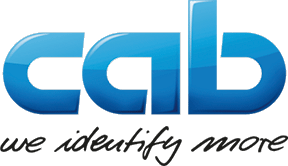A crop and its comeback
Labeling cannabis
Karlsruhe, Germany | October 12, 2023
According to the Federal Minister of Health adults in Germany are to be allowed to grow and consume cannabis in defined quantities. Plans intend as well in-control distribution in licensed stores. Doubts in how to handle hemp flowers and leaves are to be removed, quality be controlled and consumers protected. In that respect, reliable labeling is essential.
Boom expected by industry
Since 2017, physicians in Germany can prescribe cannabis and its preparations for medical use. With the active ingredient THC no longer a narcotic, purchasing and possessing defined quantities of flowers and leaves will complement this market. A CEO in this sector spoke of competitors expecting a tenfold turnover in the first year. Consumers' health and regulatory information remain key aspects. Species or blends such as Gorilla Glue or Purple Haze must, if put on market, labeled in accordance with standards. Conveyors and distribution centers demand reliable tracking. Various cab systems for printing and applying labels already exert this in US states with legal cannabis use.
Hemp put into context
Hemp is a traditional and versatile crop. All its parts can be processed. Fibers can be found in insulators and composites, reinforcing fibers in the automotive sector, mulches, bedding and mats for rodents, papers and yarns. Peeled hemp seeds and bruised grains, oils and proteins, fiber flours, breakfast cereals and creamy pesto are stored in supermarkets and wholefood shops. CBD extracted from hemp plants to oils and capsules is in demand in cosmetics and for regenerating body and mind. Industrial hemp consists of less than 0.3 percent psychoactive substance. Only such species are allowed to be cultivated, and only by farms. Cultivation must be registered and is checked by authorities.
Samples of label application
- SQUIX, MACH 4S or EOS printers are first choice when printing regulatory or packaging labels at workstations, to be stuck to products by hand. Adding variable data (product designation, data of manufacturer and production, batch numbers, quantities and weights, shelf lives and storing conditions, THC and CBD in percent, indexing as indica, sativa or hybrid) on blank or pre-printed color labels has been tried and tested. Labels are designed in the cablabel S3 software and transferred to a printer. The hardware is rugged. Maintenance and cleaning from contamination do not require customer service or external service technicians, but can be done by operators.
See a report of a hemp pioneer labeling: www.cab.de/en/bafa
- By extending SQUIX printers to all-around labelers, cylindrical containers can be marked on a 360° circumference. For this purpose, products are placed onto rollers and label applications triggered by a hand switch or a foot switch. The AXON 2 print and apply system has proven its worth when labeling pre-rolled joints in tubes. Labeled tubes can be ejected to a tray.
See an exemplary video: www.cab.de/en/axon-skunk
- AXON 1 print and apply systems mark cylindrical surfaces quickly and reliably. CBD oils in vials (as known from nasal drops) can be inserted in vertical orientation by hand or automated by a robot. The printing of a label and its application each take just a moment. Labeled containers can be removed one by one.
For illustration a video of tubes in medtech: www.cab.de/en/axon-robot
- IXOR labeling heads apply large numbers of pre-printed labels to glass or PET containers fully automatically in rotary or linear plants. By installing a PX Q print module upstream a label application, variable data can be added to decorative labels. On the front of containers, labels provide a face, on the back they display identities. Sealing labels prevent from unauthorized access.
To get a better idea, see a video on spice containers: www.cab.de/en/gernep
- HERMES printer units can be expanded by applicators. Labels can be automatically pressed onto products or their packaging, rolled or blown on without contact, even corner-wrap. By providing form pads with a silicone surface, labels can be applied onto cylindrical bodies, inclined or curved surfaces without bubbling.
The manifold possibilities are explained in a written talk: www.cab.de/en/hermes-interview
Practical printer options
Peeling labels off its liner is uncomfortable. cab provides relevant printer models. Separated labels have thus only to be removed from the peel-off plate. While one label is stuck, the printer is already printing the next one and provides this as well. Stand-alone operation eliminates the need for a PC, or even a network. Labels can be accessed, printed and applied at any time. There is no need of having ready-printed labels on stock. If labels are needed but no power socket is available, mobile versions of EOS printers help. 24 Volt input voltage enable supply by any powerful rechargeable battery.
Company profile
cab is Europe’s biggest manufacturer of label printing systems. The range of devices includes solutions for marking individual components, units, products or packaging. Healthy global growth, pioneering technologies, products designed according to the needs of operators and the competent support of all customers are prior goals of the company. Employees at locations in eight countries and more than 800 distribution and service partners around the globe are there to meet the targets.
Contact
Guntram Stadelmann
Marketing, Technical Editing
cab Produkttechnik GmbH & Co KG
Wilhelm-Schickard-Str. 14
76131 Karlsruhe, Germany
Phone: +49 721 6626-285
Email: g.stadelmann@cab.de
www.cab.de/en
